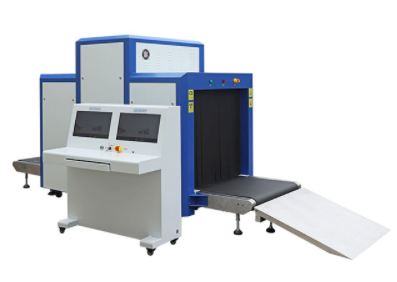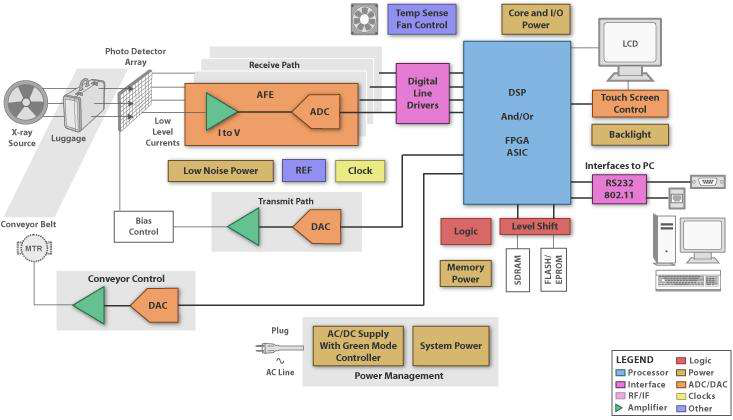©Copyright 2002-2025 JKDC Security Co., Limited. All rights reserved. Privacy Policy | Terms and Conditions Site Map
Provide One-stop Security Solution for a Safer World
What is an X-ray baggage scanner?

X-ray baggage scanners are not strange for us, it has become a necessary facility at stations and airports. X-ray inspection is often used for security scanning of luggage, such as check-in and hand luggage inspection at airports.
The object to be inspected must be subjected to X-ray radiation and the radiation that passes through the object but is not absorbed will be collected on the image detector (usually a photodiode) area array. These detectors output ultra-low-level currents that require special signal conditioning and require high-resolution data converters to achieve the necessary resolution to properly visualize the scanned item.
Its design block diagram is as follows:

What is the working principle of an X-ray baggage scanner?
X-rays are high-frequency electromagnetic waves with a short wavelength (shorter than the wavelengths of visible light and ultraviolet light) and high energy. Therefore, x-rays can penetrate some objects.
The x-rays used in security inspection are long-wavelength soft X-rays (with a wavelength range of 10 to 100 nanometers). Compared with short-wavelength hard x-rays, their penetration is weaker. X-rays of security inspection equipment neither produce radioactivity nor produce radioactive materials when penetrating or irradiating objects so that there is no radioactive material residue or so-called radioactive contamination.
When the item to be inspected is subjected to X-ray radiation, the radiation that passes through the item but is not absorbed will be collected on the image detector (usually a photodiode) area array. These detectors output ultra-low-level current that requires special signal conditioning and requires a high-resolution data converter to achieve the necessary resolution to properly visualize the scanned item. This signal conditioning is sometimes included in a single-chip data acquisition solution, as is the case with precision analog-to-digital converters (ADCs) with current-to-voltage (I-to-V) conversion. Other times, a discrete extremely low current/noise front-end amplifier measures and amplifies the output current of the image detector area array and then drives a separate voltage input AD.
Conclusion
For x-ray baggage scanner in public places such as airports and subway stations, the baggage entrances and exits of security checkers are most susceptible to radiation leakage. The gap between each lead curtain and each lead curtain is small. There will be no radiation leaking out. At the same time, when the rays are turned on, if the head and hands are not stretched in, there will be no harm to the human body.